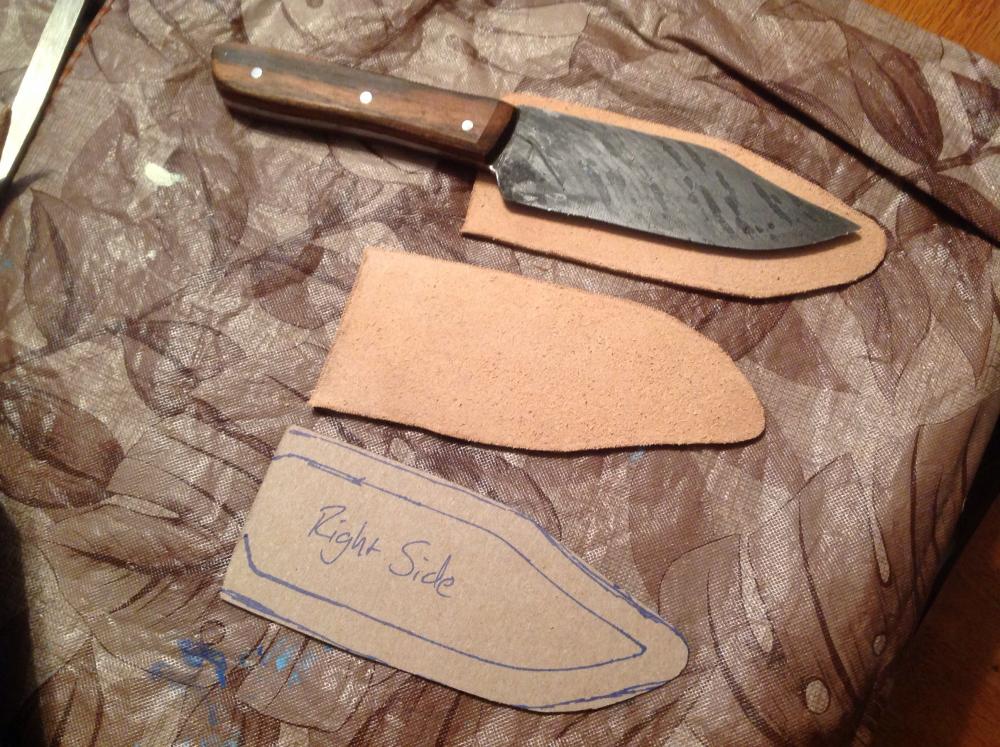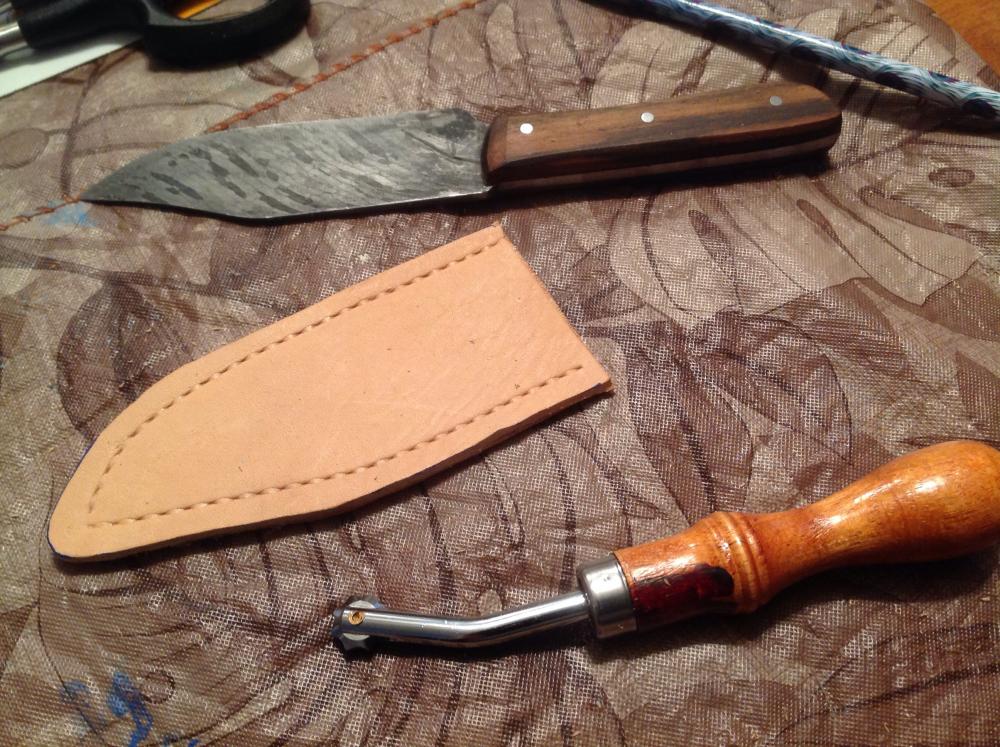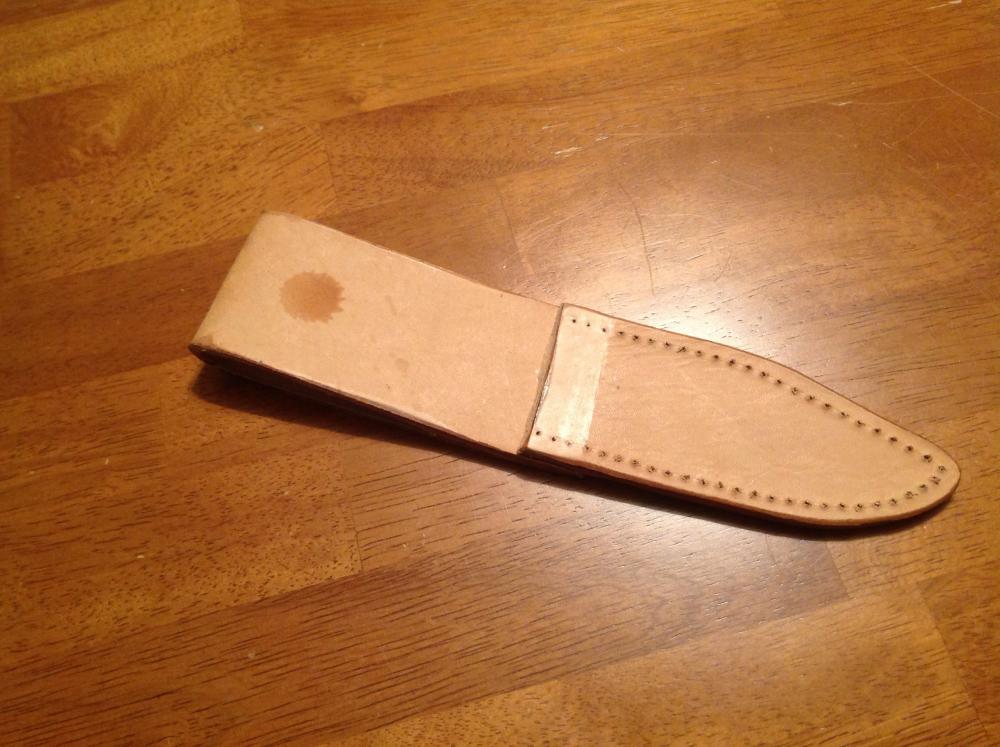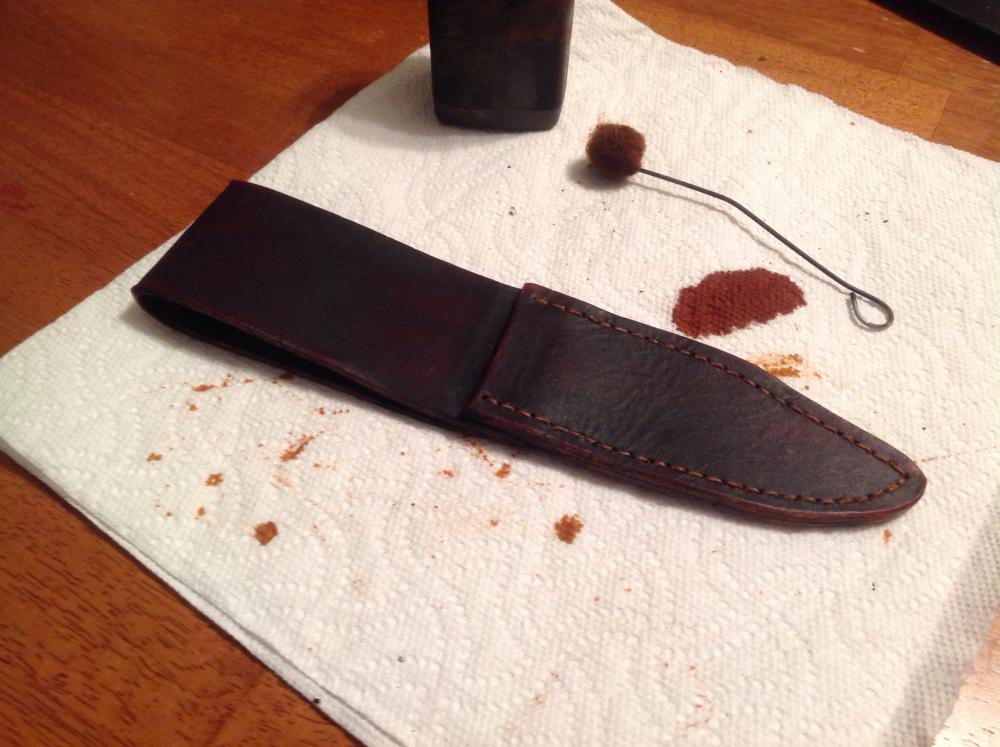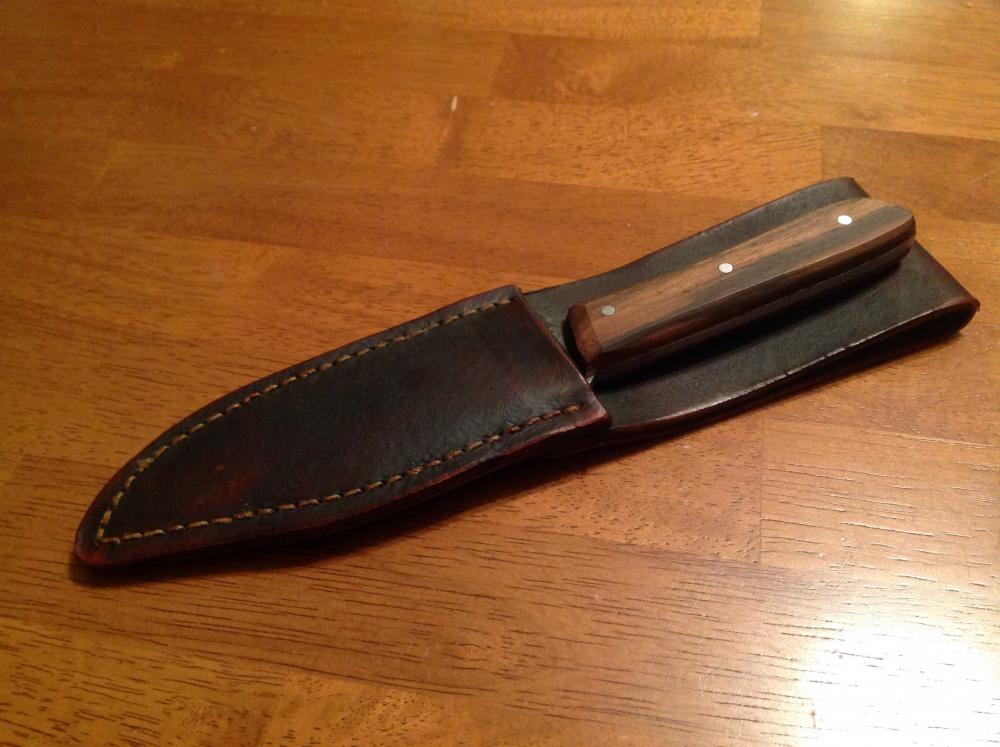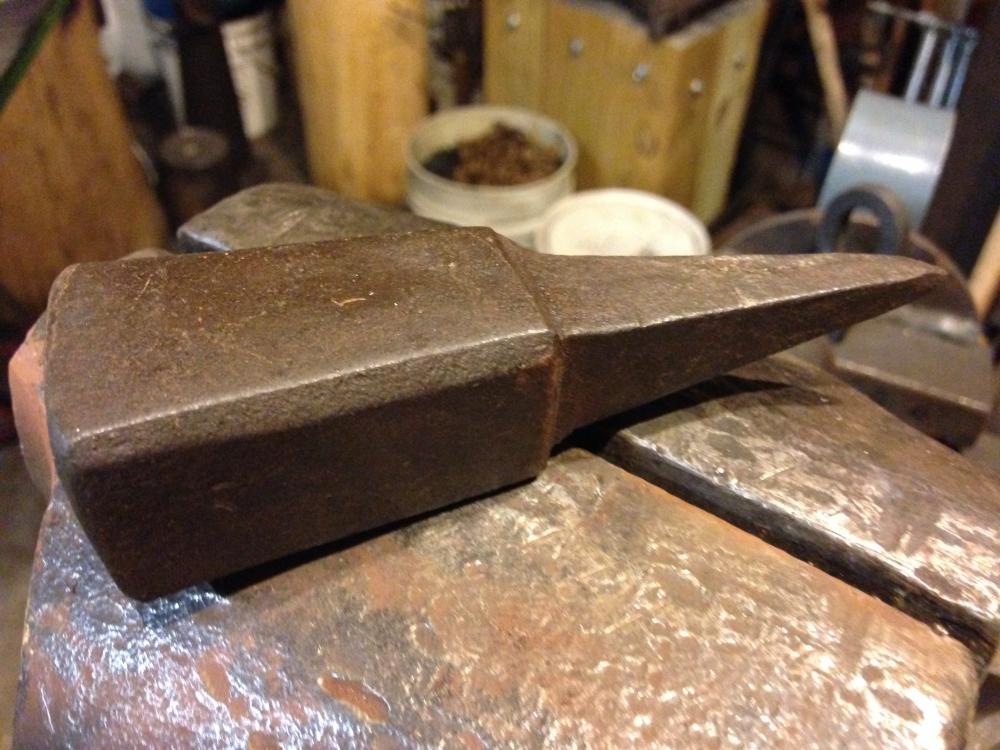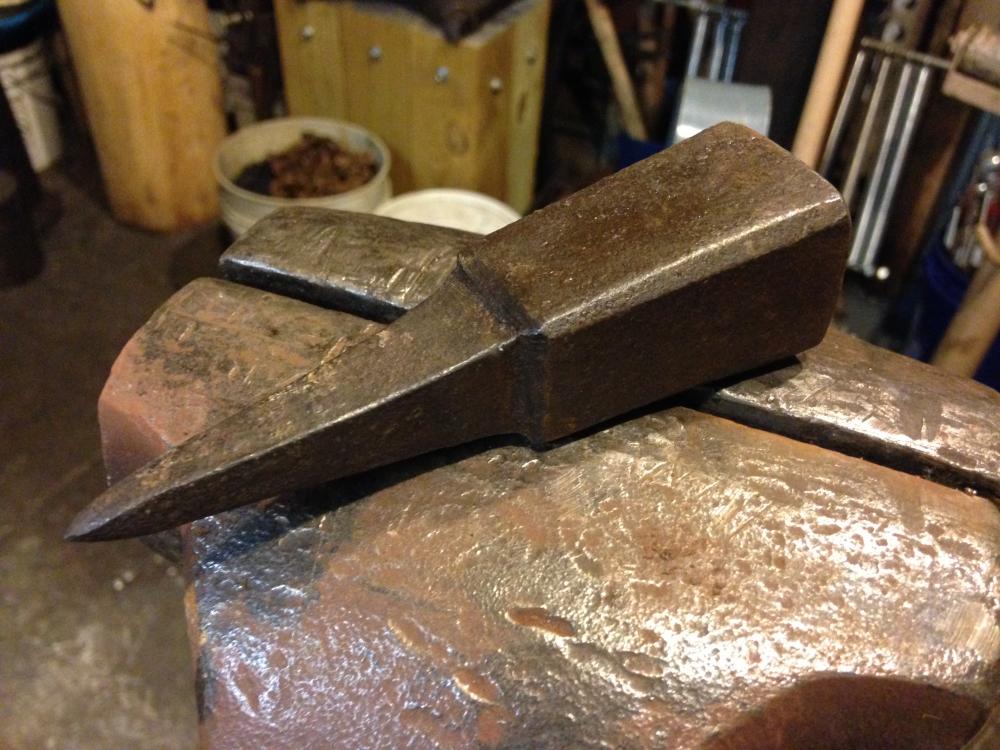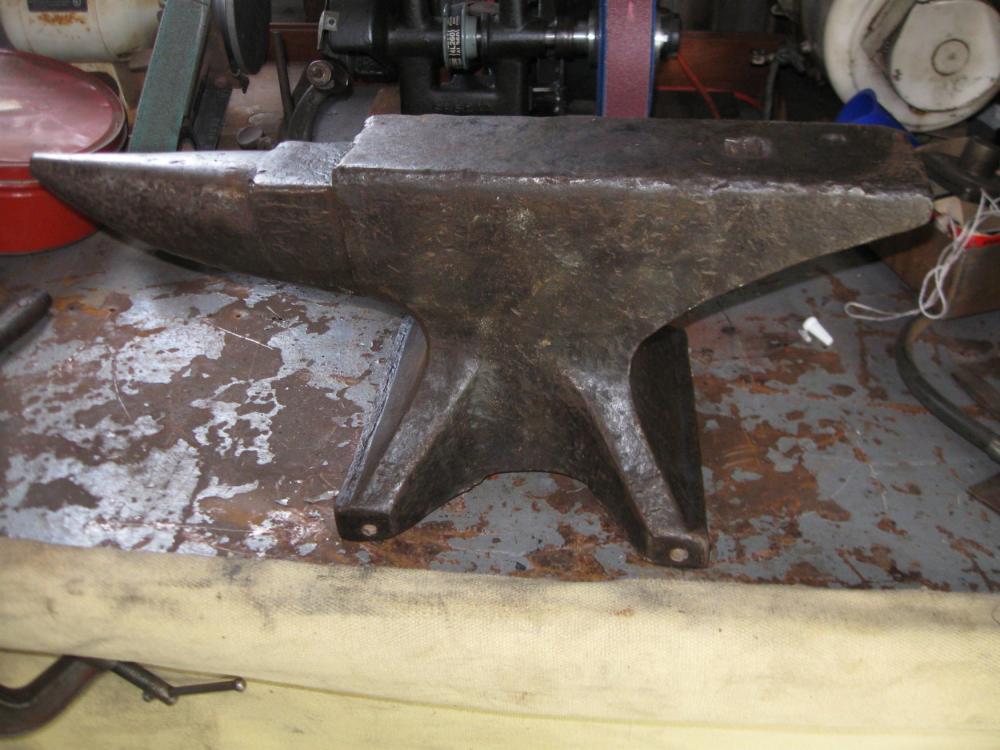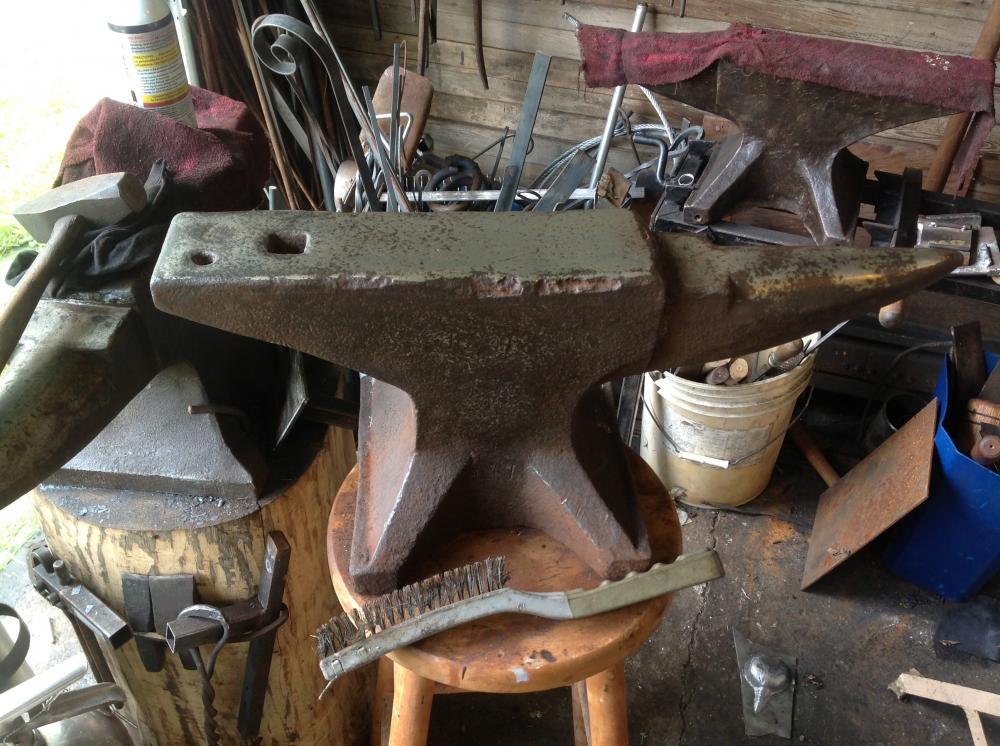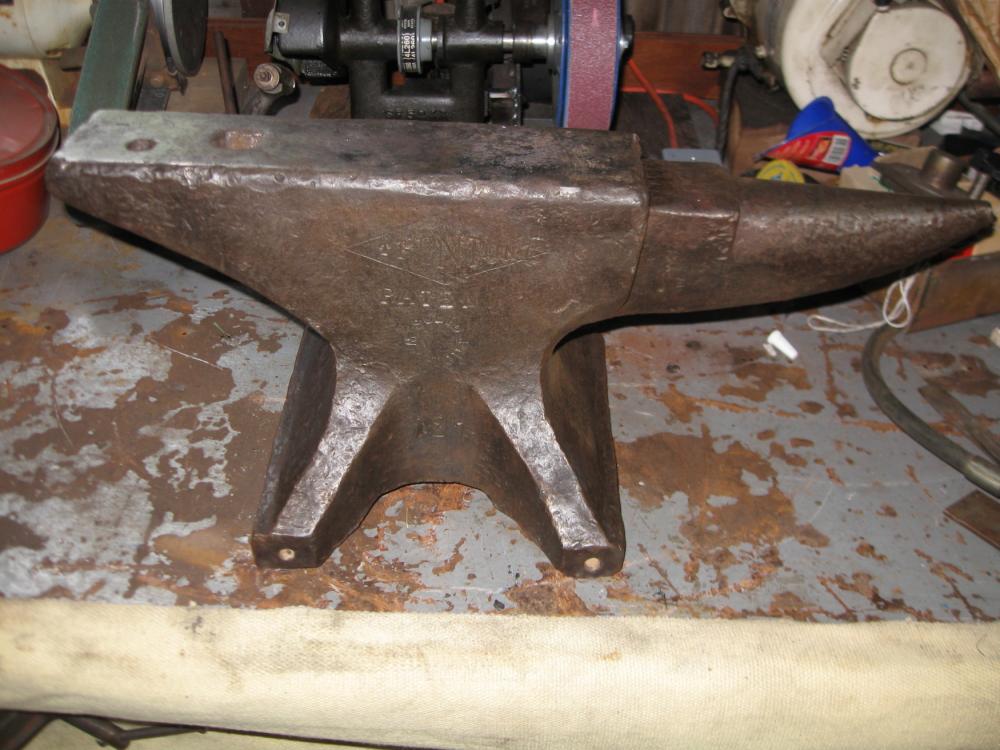-
Posts
224 -
Joined
-
Last visited
Content Type
Profiles
Forums
Articles
Gallery
Downloads
Events
Everything posted by wd&mlteach
-
Nice, I too wrap my anvils with chain to help quiet them done. I never thought about welding it together to make a security net around my anvils. That makes a lot of sense. As pointed out earlier, anything that can be thought of can be defeated. But realistic ideas for slowing them down are what I am interested in. Thank you
-
Thanks for the feedback so far. It looks we are already coming to the same conclusions. I know you can't stop them only make it harder/slower. I believe in keeping my stuff locked up when not in use. I will work on making it as tough as I can to take, creative mounting is where that is at. As far as noise makers go I put cow bells on all of my swinging doors. I hope if somebody starts prying on a door to bust the lock, the bells will start making some noise. If not just moving past them makes them ring. It also sounds like a general store on most days. Keeping along the door lines, I have also place old u bolts from a Jeep Wrangler in the tracks of my garage door. Even if they pop the lock, lifting the door is not happening until those are gone. As far as insurance goes, I have talked to my agent and I have raised the coverage for the garage. He recommended that I go through and photograph every tool from anvil to zener diode. Then drop the memory card off with him or upload the photos to a free Google account. I still have to do that individually for each tool. For now, I have gone through and shot a video tour of everything. It is a stopgap until I have time to lay everything out on the floor for family pictures. A few last things that I do now. One of them is to spray paint the handles of everything with glitter spray paint. Glitter, for those of you who do not know, is the Virus of the art world. Once you get it it is easily passed to everything you touch. I know it makes all of my stuff look, well not as manly. Folks who do not know me question it. But I just tell them I like purple and glitter. They just smile and shake their heads. I figure I have a heck of a time getting it off of my clothes after a day working, if somebody takes my stuff they will too. Even if they do strip it off, there will be glitter evidence somewhere. As for my last step in defense, I keep the cutting tip off of my oxy-a setup. I know once they get in they have access to all of my tools. The first tool I will not let them have the hot knife. Yeah, it means walking back in the house every once in awhile. But it keeps the tool away from any unauthorized users, even my boys. Plus, I would hate to foil a would-be theif with a great secure base design. Only to have them get huffy and run the torch over the face just out of spite. Man that would tick me off big time. I toyed with the idea of placing some expanded steel over the windows. I know it is not as heavy as a bar, but if it is done right it would slow them down. But then I threw that out when I realized the sides of my garage are wood boards. All one really needs is a crowbar and they are in.
-
With the prices of anvils constantly rising at insane rates here in the States, it is starting to make me think a little bit more about anvil security. I currently live in the middle of town. My forge is on wheels and when I smith I have my garage door open for the all of the world to see. The folks that live in my neighborhood are nice enough. They know me and seem to like having me do my thing. I have always made it a point to make sure any visitor walks away with something like a hook, bottle opener, or hog-tailed turner. My hopes in befriending all of them is two-fold. Firstly, I hope that they do not turn me in for violating any borough ordinances. And secondly, I want them to know me, my normal hours and to keep an eye out for people other than me messing with my stuff. Currently, two of my anvils are mounted on stumps with spikes hammered over. I know the spikes are not a security option. They are more for keeping the anvils from jumping around when working with them. I have toyed with the idea of ditching the traditional stumps and welding together something a little more substantial. I would then lag the base to the floor and weld caps on the bolts to prevent them from being loosened. I guess, ultimately I could weld the anvils to the bases. But man that would just kill me and some of their value. That being said, I think I would be more disheartened to wake up and find them gone, so welding them is a real option at this point. I also toyed with the idea of drilling and tapping the bottoms and bolting them to the steel or wooden bases from the inside. Steel would be way easier in this respect, but it is possible with the stumps as well. I also know that if somebody wants it bad enough, they will get it. No matter how much I try to devise a way not too. I guess what I am looking for is some sane ideas on anvil security. What do you folks do to keep your anvils from walking away? I have locks on windows and doors, but locks only keep honest people, honest.
-
It is really hard for me to see what you are showing here. Google "casting defect gas porosity" and check out the images to see if they match what you are seeing on your anvil. If they match then I would say you have a good reason to contact the supplier and run this evidence past them. They may be willing to replace the defective piece or they might cut you a discount on what you paid. If it were me I would keep the defects and hope for the discount. I have worked on and own anvils with faces that have contain many, many more defects that yours exhibit. However, I did not pay top dollar for any of my anvils. If I had, my standards would be higher.
-
I have cleaned up a few rusted anvils, but none like that one. That is amazingly rusted for Arizona! The last few I used a cup brush to knock off anything I could that was loose and dusty. After that I evaluate and decide if it is worth a belt sander or not to knock off the really high stuff. It is amazing how far those pits will go. In fact I think some of them will reach to the table.
-
Awesome job, sewing finished leather by hand can be tough. I love my leather apron -Leather Forever! When hand stitching leather I use an overstitching wheel and an awl to punch through the leather. I place a block of oak behind the leather as not to dull the awl or stab myself or the table. I also use a Speedy Stitcher as it is great!
-
Thank you for the information in this post. I found one of these about five years ago at a flea market with some other blacksmithing stuff. At the time I did not know what it was but it looked cool and it was only a few dollars.
-
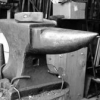
large anvil identification help
wd&mlteach replied to brycegrant's topic in Anvils, Swage Blocks, and Mandrels
-

That time of year: heat & condensation
wd&mlteach replied to KYBOY's topic in Building, Designing a Shop
I coat my anvils with linseed oil when I see rust starting to breed on them. I put it on just the sides, under the heel, and under the horn. It does darken bright steel a bit. But the sides have a dark patina anyway, so I do not see a problem with it. On the top of each anvil I lay used strips of cotton towels. They are all dirty, greasy and grimy. Heck, one of the towels is what I wipe down my blower with at the end of the day. It soaks up all of the oil that weeps from my blower and collects all of the coal dust from a day of working. The other ones are just used old strips of a bath towels that have been used sometime in their life to clean dirty oily things -mostly oil spills from vehicle work. My shop is completely unheated and you can see through the walls in some spots so it is drafty! This method has kept the rust away for me. Occasionally, when the towels seem a bit dry I spray the towels down with PB Blaster or WD 40. But I do not think tons of oil in the rags would be a necessity. I think it just takes a little oil to keep the rust gremlins away. I think it is more important to keep the temperature swings at bay. I also have my wood lathe in my shed and it does not get tucked in with pretty little blankets that have been soaked in dirty oil. I normally just put a coat of car wax on the bed and cover it with a piece of heavy canvas, or an old welding jacket. It seems that if I keep it under the canvas for storage it does not seem to sweat or rust. I am guessing it has to do with the gradual temperature changes due to the canvas blanket. -
I also would save the big piece for a future project. Or I would find a scrap yard that might trade me even up for smaller stuff, I have one of those close by that I have been a regular at for about 15 years. I used to try and save all of the drops that I could find at work. Thinking that I can just forge weld these pieces together to make whatever I want. I would wager the old time smiths did this as standardized sock might have been hard to come by. I can see the pattern of different pieces forge welded together in some of the older pairs of tongs that I have. And after my experience I know it works. But after one project I learned that my time is better used by buying standard stock and making that into what I want.
-
According to Anvils in America (Postman, 1998), early Trenton anvils were most likely imported from Europe. Postman suggests that these anvils could have been produced by German or English makers. I would agree as I have owned two early Trenton anvils and they were different. One of them had all of the characteristics of a Peter Wright, except for the name and and stamped stone weight. The other did not, it was almost more generic and plain. I recommend that you pick up a copy of the Postman book as it is wonderful. The book will explain the manufacturing process of the domestic Trentons and several other popular anvils. The book will also clear up most of your other questions related to your anvil.
-
My guess on the mystery anvil is that is is a Peter Wright. It has flats on the feet and an extra handling hole on the front feet. Just like the one pictured as my avatar. My PW also has anchors as maker marks on the front feet.
-
I have no idea what company made the top half of that anvil. But it sure looks like it was broken and then Welded to a plate.
-

square hardy in round anvil hole
wd&mlteach replied to ede's topic in Anvils, Swage Blocks, and Mandrels
I have one of these anvils at the school and the hole is most definitely round. I never thought of having it square I just always used it as is. All of the bottom tooling I have made for this anvil has had a tapered round shaft to them. Similar to a Brown and Sharp taper. I did make a bending fork for it once. My first attempt had a tapered round shaft. When I first used it I drive down firmly to set it before a torque on it. It worked okay but it did get loose, which did not make me happy. Next, I welded some extra material on the top of the shaft below the bending fork. I filed it square to match the hardy on the anvil. That worked better but eventually after a bunch kids used it the corners rounded and it started to slip. On revision three I decided to think outside the hole and I welded enough angle iron on both sides of the fork to form a saddle across the whole face. It does not move and now the round shaft is more of an alignment pin. I used that setup for a few years and it worked fine. I eventually made a new bender for the kids to use and I keep that clamped in the post vise. The vise is secured better. Even though the anvil is mounted to a stump, it really does not have enough mass to do heavy stock bending. The stump just spins. Even though it is small, that little anvil is one tough little bugger. I would think it would be a lot of work to file that hole out. The steel quality is amazing. If I am ever financially well off and I feel as though I need a brand new anvil, a big Peddinghaus would be my choice. -

New member, new anvil 1st post
wd&mlteach replied to root's topic in Anvils, Swage Blocks, and Mandrels
root, Nice anvil and post vise. They should serve you and your family for generations with use -pending you do not feed that mogwai after midnight. Since your are in PA I will put a plug in for the Pennsylvania Artist Blacksmiths' Association. Check out this link for more information www.pabasite.org Our next meeting will be on 2/7/2015. -

Anvil care question from a newcomer
wd&mlteach replied to WHP67's topic in Anvils, Swage Blocks, and Mandrels
First off, great deat on the anvil. It looks wonderful. And welcome to the site! You Really do dot have to clean it to use it as it can be used as it. However, if you want to clean it, use a twisted wire cup on an angle grinder to knock off all of the rust. Once the rust is off I like to coat it with linseed oil. The linseed oil can tend to darken the iron a bit. Some people like it others do not. I like the looks and the protection more. My shop is not heated and temperature swings cause my anvils to sweat and if they are not protected they rust. I coat everything with the linseed oil before I mount the anvil to a stump. The oil coating will burn off the face and the horn when I use it. To protect the top I have an oil/grease soaked towel that I lay over the top of the anvils. The towels go from tip to tail. They have stopped the rust from appearing between the times I get to use them. Another way to keep the rust off the face is to use it everyday. But so far I haven't figured out a way to accomplish that. -
Wow, great anvil score. If that trenton was in my classroom I might hide it too! Or at least put a wooden top on it for protection. Right now I have what I think is a little peddinghaus anvil for my high school. That little guy might weigh 60 or 70 pounds. It is tough as nails and doesn't mind the kids taking a whack at it every now and then. Even though my school anvil is solid steel, when I demo with it I explain how anvils were made by forge welding a top onto the wrought iron. I explain that they are to be repected and used appropriately. I explain how hardened metals fracture and chip when struck together. Then I show them how to do forge out a few items. Before I let them work I call a random kid up to give it a try and prove that They learned something. Then it never fails sometime in the future I will hear a kid go over, pick up a hammer and give it a whack -just to hear it ring! I am hoping sometime in the future they take a chunk off of it so I can buy a new bigger one. What will probably happen first will be a rebounding hammer hitting a kid as that anvil is tough. I do warn them of that, it is on the safety test and but they are a lot shorter than I am.
-
If your shop is small and you use it for more than just blacksmithing, go with the wheels. If you have room and figure out where you want it bolt it down, both have advantages. I would love to have the room to dedicate to just blacksmithing but I do not. So the ability to move my vise around with the welded on wheels is great as the base is *commandingly heavy.
-
Here is my take, you can laugh at me if you want. Anvils that have sharp edges, to me they are just awesome to look at and touch. When I see a clean and beautiful anvil that is pristine I can't help myself but to go over and experience it. The first thing I do is to run my hand across the face and edges just to feel the smoothness of the cool steel. And as my hand slides across the face of that anvil I say wow under my breath. During that utterance, I imagine everything that went into the creation of that anvil. I imagine the hard work and physical effort needed to persuade this large chunk of iron from whatever it was, into what it is now. I think about the working conditions that employees had to endure to make this piece of history happen. I imagine the risks of just working in one of the early foundries. I wonder how many folks were hurt, maimed, or killed making these things during a time period when the employers were not required to ensure safe working conditions. Remember, OSHA, employee healthcare, or workers compensation did not exist when most of these anvils were produced. I think about the extreme temperatures that the fellows had to endure when dealing with over a hundred pounds of blazing hot metal, burns had to be a commonplace. As you can probably tell I cannot get over what it took to bring one of these functional works of art into existence. I do not work in a steel mill or foundry, but I do I teach wood and metal manufacturing at both the high school and college levels. To me a pristine anvil is the pinnacle of human skill-based manufacturing and I will forever respect anvils and the men who manufactured them. However, that being said, anvils with crisp corners cause me a bit of angst when actually using them, -especially if they are not mine. I have a beautiful 150 Peter Wright with nice edges in my shed. I love it and as you can guess I baby it. I never do anything to abuse those corners and I cringe whenever a friend comes over to use my tools. I have not chipped one yet but I am always worried that I might miss when drawing down and chip an edge. To alleviate my anxiety I have three anvils. It is a little bit of overkill, but hey there are cheap 'round these parts. I keep a good working anvil, my PW, and a NC Big Face. I use the working anvil, one with a swayed back, marred face, a bit of pits, and some dents for general forging. I use it for what it is and I love it. If I miss and strike the face with an errant blow (I am hoping we all do that some times and it is not just me), I do not worry. I just keep on forging, no pausing to see if I damaged the face, no worries. If it is something that I want really smooth and straight I then finish it on the PW. If I want a hard corner I use the NC anvil to establish and the PW to refine. I also use the NC for demos as it travels nice with the stand. Anyway that is my take on the edges. My wife jokes with me and says she does not have to worry about me looking at other women, just anvils ;) Has anybody chipped an anvil edge? I have seen some pretty badly chipped edges and I have always wondered what has to happen to chip off an edge.
-

My first Anvil!! ...Confirm ID?
wd&mlteach replied to blackironskillet's topic in Anvils, Swage Blocks, and Mandrels
Peter Wright is my guess. The extra hole is unique. -

Help Finding an Anvil
wd&mlteach replied to DRCrumlich's topic in Anvils, Swage Blocks, and Mandrels
DRC you should have no problem finding an anvil in PA. I am about 30-45 minutes away from you and everyday I can find them on CL in our area. We are in an anvil rich part of the world, it is rather nice. I personally have not paid more than a dollar-a-pound for any of the anvils I have bought. You actually have your pick around here as to what you want to spend, condition, driving distance, and size. Check CL everyday, two to three times a day for anvils. They are always there. If nothing fits what you want to spend, wait. Eventually you will find something that fits into what you want. I just bought a 232 Mousehole yesterday for $200. It is not perfect but anvils do not have to be to be usable. This particular anvil was on CL for $275 and it was listed for over a month before I bought it. Others in this world are not as fortunate as we are as far as blacksmithing goes we really are blessed with what is around. -
And the answer is . . . 232 pounds or 2 * 0 * 8 I have not weighed it yet as my wife's bathroom scale is a fancy looking one made from bamboo. It does not look anvil friendly and neither is my wife. Actual weight will be still a mystery until I find a new scale to call my own. Also, the measurements have changed from what the seller listed. The face is 5" wide, length from horn to heel is 25 3/4", and the height is 11 1/8". Chris John I believe was the closest, nice job. Thanks for all of the replies folks. I almost did not get this anvil the fellow selling it called me and told me he had another person offering more than what it was listed for. I already knew I was going to offer less than what he was asking so I called him back and let it go. A week goes by and he calls me back and asks if I am still interested. Yep, I went today and picked it up. I knocked off the rust with a twisted wire brush and hit it with a coat of linseed oil. It is far from a perfect anvil but it is quite usable and in my mind worth the $200.
-
I have only ever placed my hands and eyes on London patterns such as Trenton's, Peter Wrights, and Hay Buddens. So I do not have any experience with Mousehole-style English anvils, which is why I posed the original question. I have an appointment tomorrow to check this one out and see if it is worth purchasing. If I get it I will post more/better pictures. I called and talked to the fellow today and he said it has been outside in the weather for 20+ years which can be a little scary. Judging from the moss on the sides I believe it. I hope it is not pitted to death but it may be. Frosty thanks for the prose.
-
Here is the riddle: How much does a Mousehole style anvil weigh if it measures? height 12" face width 5" Length 25" I will post pictures when/if I get it.

